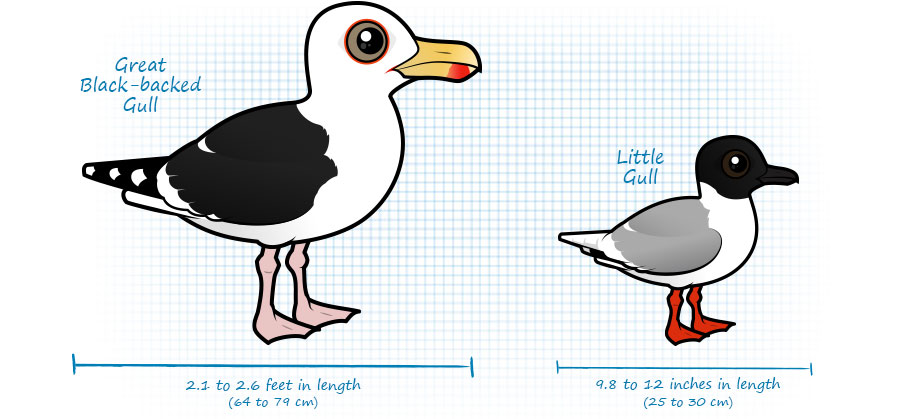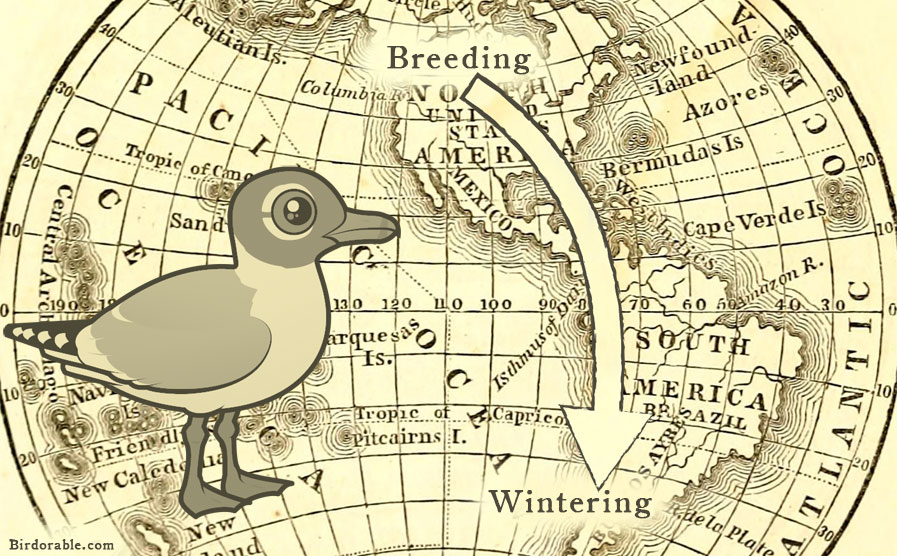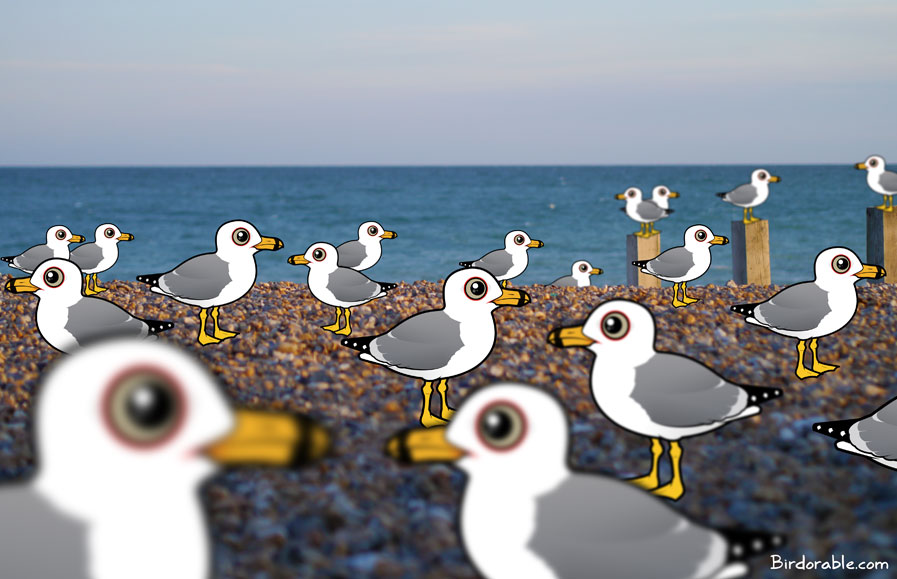Gull Week Extremes: Facts & Stats
This week, we're celebrating gulls! There are about 55 widely recognized species of gull in the world. We'd like to share some of the extreme facts and interesting statistics found within this diverse family.
Smallest Gull Species
The Little Gull, weighing in at around 4.2 ounces (120 grams), is the smallest species of gull. Its length is 9.8 to 12 inches (25 to 30 cm).
Largest Gull Species
The largest gull species in the world is the Great Black-backed Gull, which weighs in at around 62 ounces (1750 grams), almost 15 times as heavy as the Little Gull. It's length is 2.1 to 2.6 feet (64 to 79 cm).

The Longest Living Gulls
Gulls, particularly the large "white-headed" gulls, can be long-lived. The longevity record for the European Herring Gull is 49 years! The longest-lived wild Great Black-backed Gull was over 27 years old.
Cross-Species Parenting
The Black-headed Duck of South America is known to be a brood parasite of the Brown-hooded Gull. The duck lays eggs in nests of other birds (including other ducks and other gulls) and lets the nest-owners do the incubating! The ducklings are able to leave the nest just hours after hatching, making their escape without otherwise disturbing the nest. The Brown-hooded Gull or other nesting adult will continue to care for its own eggs and chicks.
Tale of the Tails
Most species of gull have a rounded tail. There are only three exceptions: the Sabine's Gull and Swallow-tailed Gull have forked tails, and the Ross's Gull has a wedge-shaped tail.
Longest Migration
Many species of gull are migratory. The Franklin's Gull may have the longest migration of all the gulls. They breed as far north as central Canada, and spend the winter as far south as Chile and Argentina.

Rare Gulls & Threatened Species
The Lava Gull of the Galapagos Islands is considered to be Vulnerable to extinction. The small population of less than 400 pairs is relatively stable but the species is probably the rarest of all the gulls.
The Black-billed Gull of New Zealand is considered to be Endangered. The population has been on a rapid decline since the introduction of invasive predators to New Zealand, like weasels and cats.
Other species considered to be Vulnerable to extinction are the Relict Gull of central Asia, the Saunders's Gull of eastern Asia, and the both the Red-legged Kittiwake and the Black-legged Kittiwake.
Most Abundant
The Ring-billed Gull was once hunted for its feathers. With protection the species has rebounded and is likely the most common species of gull in North America.

Night Vision
The Swallow-tailed Gull is a "black-headed" gull found in the Galapagos Islands. They are the only completely nocturnal gulls in the world! They feed on squid and fish that only come to the water's surface at night. In order to be able to see in the dark, the Swallow-tailed Gull has very large eyes -- larger than any other gull species!







Comments
Leave a comment
Thank you!